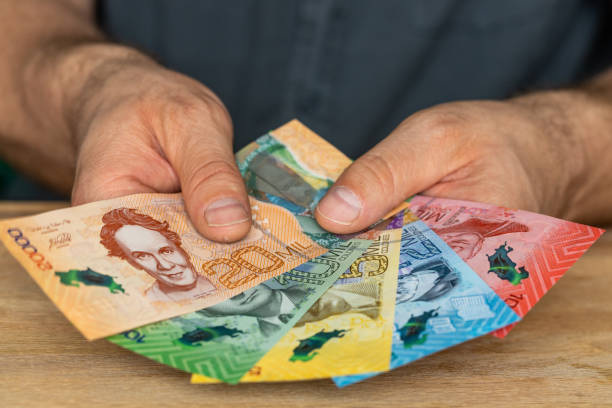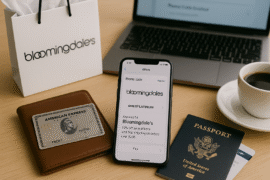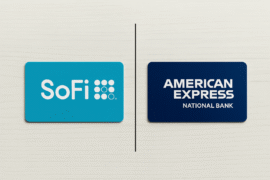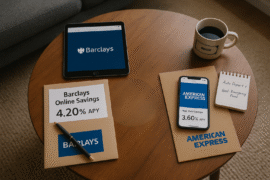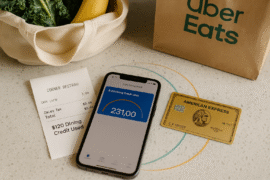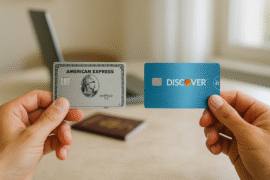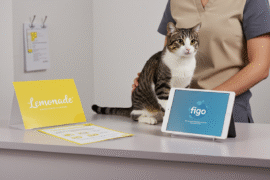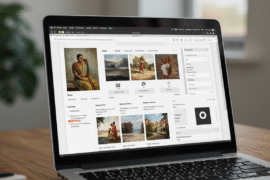This article may contain references to products or services from one or more of our advertisers or partners. We may receive compensation when you click on links to those products or services. Nonetheless, our opinions are our own.
- Key Highlights
- Introduction
- Understanding the Costa Rican Currency
- Comparing Colones and US Dollars
- Preparing for Your Trip: What You Need to Know
- Beginner’s Guide to Exchanging Currency
- Navigating Currency Exchange in Costa Rica
- Spending Money in Costa Rica: A Traveler’s Guide
- Conclusion
- Frequently Asked Questions
- Recommended Reads
Key Highlights
- Learn about the Costa Rican colón (CRC) and its relationship with the US dollar (USD).
- Get practical tips for exchanging money, finding the best rates, and avoiding mistakes.
- Understand the pros and cons of using USD versus colones during your trip.
- Discover tipping customs in Costa Rica and the best ways to withdraw cash.
- Get answers to common questions about managing money in Costa Rica.
Introduction
Planning a trip to Costa Rica? Understanding the local currency and exchange rates can help you get the most value for your money. The Costa Rican colón (CRC) is the official currency, but the US dollar (USD) is widely accepted. The Central Bank of Costa Rica controls the exchange rate, which fluctuates daily. This guide provides practical tips to maximize your budget while enjoying Costa Rica.
Understanding the Costa Rican Currency
The Costa Rican colón (CRC) is the country’s official currency. It replaced the Costa Rican peso in 1896 and is named after Christopher Columbus (Cristóbal Colón in Spanish). The colón is divided into 100 céntimos, but céntimo coins are rarely used. You’ll primarily find banknotes in denominations of₡1,000, ₡2,000, ₡5,000, ₡10,000, and ₡20,000, along with coins ranging from₡5 to₡500.
Comparing Colones and US Dollars
Both the Costa Rican colón (CRC) and the US dollar (USD) are widely used. While colones are the official currency, many businesses accept USD, especially in tourist areas. The exchange rate fluctuates daily based on market conditions, which can affect the value of your money depending on where and how you exchange it.
In tourist zones, paying in USD can sometimes be convenient and even cost-effective. However, in local markets and small businesses, using colones often helps you avoid poor exchange rates and unnecessary fees.
Preparing for Your Trip: What You Need to Know
Before traveling to Costa Rica, it’s essential to:
- Understand the local currency and its value.
- Plan your budget based on expected expenses.
- Learn where to get the best exchange rates.
By preparing in advance, you can focus on enjoying the country’s culture and natural beauty without financial worries.
Estimating Your Daily Expenses in Costa Rica
Budgeting for your trip is crucial. Here’s a breakdown of typical costs:
- Meals: A simple lunch costs around ₡3,000-₡5,000 ($5-$9 USD), while dinner at a mid-range restaurant ranges from ₡6,000-₡10,000 ($11-$18 USD).
- Transportation: Local buses cost between ₡500-₡1,500 ($1-$3 USD), while taxis are more expensive—always check fares before getting in.
- Activities: Entrance fees to national parks usually range from $10-$20 USD per person.
Prices vary between tourist hotspots and rural areas, so consider your travel itinerary when budgeting.
Deciding How Much Money to Bring
Balancing convenience and security is key when deciding how much cash to carry. Booking accommodations and tours in advance allows you to use credit cards, reducing the need for cash. Carry a mix of small bills in both colones and USD for tips, transportation, and small purchases.
ATMs are widely available in Costa Rica, but inform your bank about your travel plans to avoid transaction issues.
Beginner’s Guide to Exchanging Currency
Exchanging money wisely ensures you get the best rates while avoiding unnecessary fees. You can exchange currency at banks, ATMs, or authorized exchange bureaus, each with its own advantages and drawbacks.
Step 1: Finding the Best Exchange Rates
To secure the best exchange rate:
- Check the Bank of Costa Rica’s website for the official rate.
- Compare rates at banks and exchange offices.
- Avoid exchanging money at airports, where rates are often less favorable.
Even small differences in exchange rates can significantly impact your budget, especially for larger amounts.
Step 2: Understanding Exchange Fees and Commissions
When exchanging money, be aware of additional costs:
- Service fees: flat-rate fees per transaction.
- Commissions: A percentage-based fee on the exchanged amount.
If using a credit or debit card, ask your bank about foreign transaction fees, which can range from 1% to 3% per purchase. Some banks offer travel-friendly accounts with reduced or no fees.
Step 3: Choosing Between Dollars and Colones
Using USD is convenient for large expenses like hotels, tours, and upscale restaurants, where exchange rates align closely with official rates. However, coins are preferable for small purchases at local markets, street vendors, and casual eateries, helping you avoid unfavorable exchange rates and making transactions smoother.
Understanding local currency exchange customs can save you time and money.
- Learn common denominations to avoid carrying excessive cash.
- Use basic Spanish phrases like “cambio” (exchange) and “tasa de cambio” (exchange rate) when dealing with local vendors.
- Stick to trusted providers to protect your money and personal information.
Where to Exchange Money: Banks vs. Local Exchanges
Banks, such as Banco Nacional, offer reliable exchange services and competitive rates. However, they may have shorter hours. Casas de cambio (exchange bureaus) are more accessible in tourist areas but may charge higher fees. Choose based on your priorities—security, convenience, or the best exchange rate.
Tips for Using ATMs in Costa Rica
- Withdraw cash from ATMs in bank branches or well-lit areas.
- Use ATMs during daylight hours and stay aware of your surroundings.
- Cover the keypad when entering your PIN.
- Withdraw larger amounts less frequently to minimize fees.
- Check if your bank charges foreign transaction fees and find travel-friendly card options.
Spending Money in Costa Rica: A Traveler’s Guide
Mastering payments in Costa Rica means understanding tipping customs and knowing when to use cash or cards.
Using Credit and Debit Cards Abroad
Credit cards are widely accepted, especially Visa and Mastercard. American Express is less common. Before your trip:
- Inform your bank to avoid card blocks.
- Opt to pay in CRC instead of USD when using your card for better exchange rates.
- Keep your cards secure and report any loss immediately.
The Reality of Using US Dollars in Costa Rica
While USD is accepted in tourist areas, change is often given in colones at an unfavorable rate. Keep smaller USD bills for larger purchases and use coins for daily transactions. Large bills ($50-$100) may not be accepted.
Conclusion
To maximize your budget in Costa Rica:
- Plan your expenses and exchange money wisely.
- Compare exchange rates and minimize fees.
- Use a mix of cash and cards for flexibility.
- Stick to trusted providers for currency exchange.
By following these tips, you can enjoy a stress-free trip and make the most of your money in Costa Rica.
Frequently Asked Questions
Is it better to exchange money in the US or Costa Rica?
Exchanging money in Costa Rica at banks like Banco Nacional often provides better rates than exchanging in the US.
What should I know about tipping etiquette in Costa Rica?
A 10% service charge is usually added to restaurant bills. While additional tips are not required, they are appreciated. Tipping is generally done in colonies.
How can I avoid high fees at ATMs?
- Use ATMs within your bank’s network.
- Check foreign transaction fees with your bank.
- Withdraw larger amounts less frequently to reduce fees.
Can I use my credit card everywhere in Costa Rica?
Credit cards work in most tourist areas, but cash is preferred in rural regions and small businesses.
How much cash should I carry while exploring Costa Rica?
Carry small bills in both colones and USD but avoid excessive cash for security reasons. Use ATMs as needed.

Reviewed and edited by Albert Fang.
See a typo or want to suggest an edit/revision to the content? Use the contact us form to provide feedback.
At FangWallet, we value editorial integrity and open collaboration in curating quality content for readers to enjoy. Much appreciated for the assist.
Did you like our article and find it insightful? We encourage sharing the article link with family and friends to benefit as well - better yet, sharing on social media. Thank you for the support! 🍉
Article Title: Exchange Rate Hacks: How to Get the Best Deal on Costa Rica Currency
https://fangwallet.com/2025/02/18/exchange-rate-hacks-how-to-get-the-best-deal-on-costa-rica-currency/The FangWallet Promise
FangWallet is an editorially independent resource - founded on breaking down challenging financial concepts for anyone to understand since 2014. While we adhere to editorial integrity, note that this post may contain references to products from our partners.
The FangWallet promise is always to have your best interest in mind and be transparent and honest about the financial picture.
Become an Insider

Subscribe to get a free daily budget planner printable to help get your money on track!
Make passive money the right way. No spam.
Editorial Disclaimer: The editorial content on this page is not provided by any of the companies mentioned. The opinions expressed here are the author's alone.
The content of this website is for informational purposes only and does not represent investment advice, or an offer or solicitation to buy or sell any security, investment, or product. Investors are encouraged to do their own due diligence, and, if necessary, consult professional advising before making any investment decisions. Investing involves a high degree of risk, and financial losses may occur including the potential loss of principal.
Source Citation References:
+ Inspo
